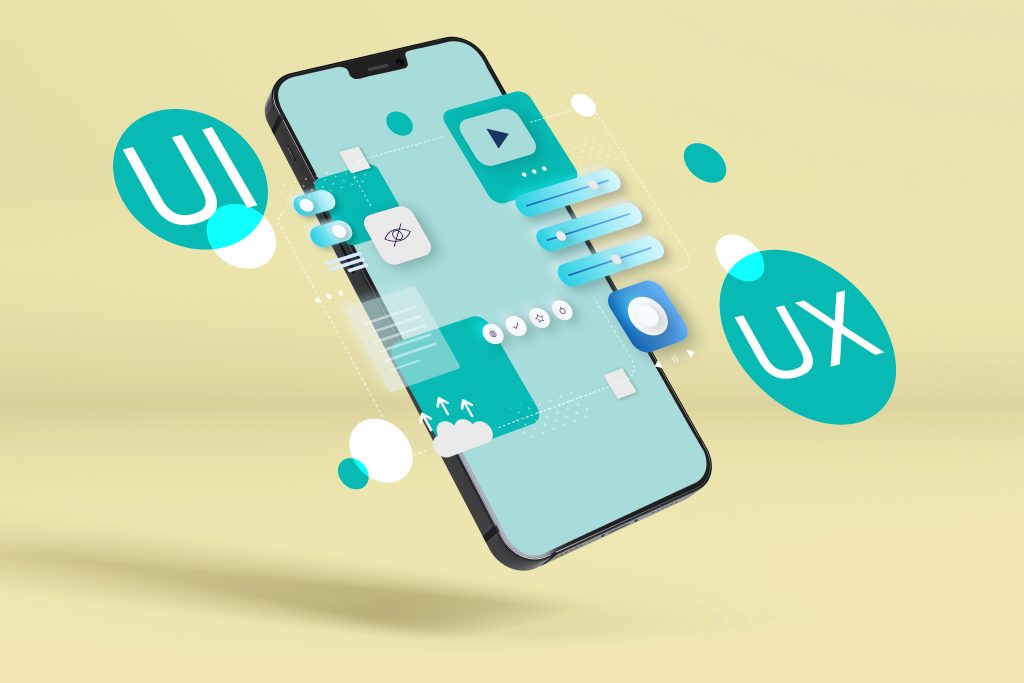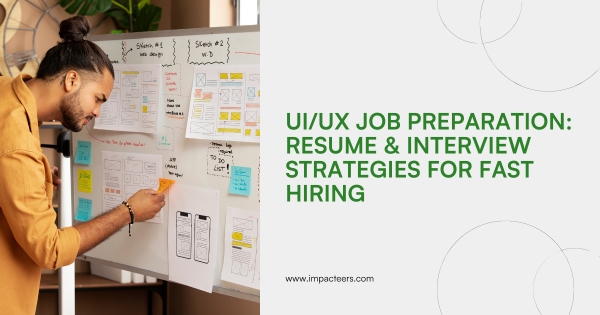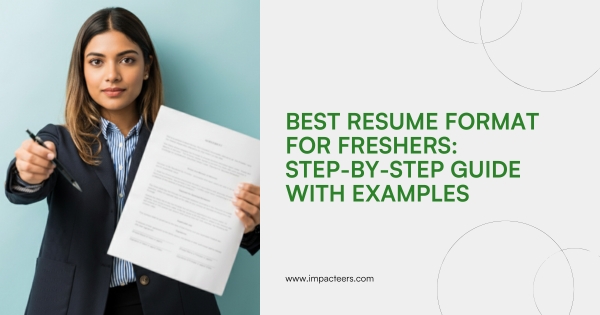UI/UX Resume is the first step in your job preparation, ensuring recruiters see your design skills and creativity at a glance.
The design industry has exploded in the last decade. Every app, every website, and each digital product you touched require a strong UI and UX backbone. But intense competition comes with increasing demand.
For every open position, hundreds of talented designers submit applications. Most resumes look alike—filled with tools, vague job duties, and generic lines. Recruiters often skim and skip.
This is why your UI/UX is not just a piece of paper. This is your portfolio’s first handshake, your entry ticket, a chance to stand outside. And once you get inside the room, the answer to the interview can make or break your shot.
Let us see how job seekers can prepare resumes and interviews to track their design career faster.
Visit Us >>> https://www.impacteers.com/home
1) The Role of a UI/UX Resume in Careers
Your resume is not only about listing tools like Figma or Sketch. It’s about storytelling. Recruiters want to see how you solved problems, not just that you pushed pixels.
A good UI/UX Resume does three things:
- Shows design thinking.
- Proves results with numbers.
- Highlights collaboration with developers, managers, and clients.
2) Anatomy of a Strong UI/UX Resume
Think of your resume as a product design project. Structure matters. Clutter kills. Here’s a simple structure:
- Headline: “UI/UX Designer | Figma | Wireframes | Prototypes.”
- Summary: 3–4 lines about your philosophy and achievements.
- Skills: Tools (Figma, Adobe XD, InVision), plus soft skills (communication, research).
- Experience: Impact-driven bullets.
- Projects: Case studies, live links, portfolio.
- Education/Certifications: Online courses, bootcamps, or design certifications.
3) Table: Resume Sections That Attract Recruiters
| Section | What to Include | Why It Matters |
| Headline | Job title + tools (e.g., UI/UX Designer | Figma |
| Summary | 3–4 lines about design thinking + career focus | Sets recruiter expectations |
| Skills | Tools + soft skills | Shows technical + human side |
| Experience | Results with numbers (“Improved conversions by 25%”) | Proves real-world design impact |
| Projects | Portfolio, case studies, Dribbble/Behance links | Demonstrates creativity + execution |
| Certifications | Online courses, bootcamps, UX design certification | Adds credibility |
4) Resume Writing Hacks for UI/UX
- Keep it one page if you’re a fresher, two if experienced.
- Use active verbs: designed, improved, streamlined, collaborated.
- Add numbers: “Reduced checkout drop-off by 15%.”
- Highlight collaboration: recruiters want team players.
- Match the job description’s keywords in your resume writing.
5) Mistakes That Kill a UI/UX Resume
- Listing tools without context.
- Adding every single freelance gig without impact.
- Forgetting portfolio links.
- Using design-heavy resumes that fail ATS (Applicant Tracking Systems).
Remember, a resume builder helps with structure, but personalization is key.
6) Why Soft Skills Matter as Much as Tools
Good design isn’t just about wireframes. It’s about empathy, communication, and collaboration.
Recruiters love resumes that show:
- Teamwork with developers and managers.
- Problem-solving mindset.
- Communication with clients.
Soft skills set apart an average designer from a future design lead.
7) Preparing for UI/UX Interviews: The Big Picture
Most IT professionals entering UI/UX roles prepare only for design tasks. But interviews test more:
- Design process and thinking.
- Communication style.
- Real problem-solving.
Expect both portfolio walkthroughs and behavioral questions.
8) Sample UI/UX Interview Questions and Smart Answers
Q1: Walk me through your design process.
Answer: “I start with research, then create wireframes, test prototypes, collect feedback, and refine before final delivery.”
Q2: Tell me about a time your design failed.
Answer: “In one project, users struggled with navigation. I revisited the flow, ran quick usability tests, and improved task completion by 20%.”
Q3: How do you balance user needs with business goals?
Answer: “By prioritizing features, running A/B tests, and aligning design choices with KPIs.”
Short, clear, confident answers win.
9) Portfolio Presentation: Your Secret Weapon
Resumes get interviews. Portfolios get offers.
Tips:
- Show 3–5 strong case studies.
- Explain the problem, your role, and the results.
- Use storytelling, not just screens.
- Add links to live products when possible.
10) How LinkedIn Boosts UI/UX Careers
Your LinkedIn profile should match your UI UX resume.
- Add “UI/UX Designer | Portfolio Link” in your headline.
- Post weekly about design learnings or projects.
- Join design communities and connect with recruiters.
Sometimes, a single recruiter message can change careers.
11) The Role of Certifications and Online Education
Many job seekers start without formal design degrees. That’s okay. Recruiters value practical work and certifications.
Strong certifications include:
- Google UX Design Professional Certificate.
- Nielsen Norman UX courses.
- Interaction Design Foundation.
Adding them boosts trust in your resume.
12) Resume Builders: Helpful or Harmful?
A resume builder can save time, but don’t rely blindly. Templates often feel generic. Always rewrite in your own words.
Rule: Resume builders give the frame. You provide the personality.
13) A Roadmap for Freshers Entering UI/UX Careers
Weeks 1–2: Build your portfolio (2–3 solid projects).
Weeks 3–4: Craft a clean resume. Add LinkedIn updates.
Weeks 5–6: Apply to at least 20 jobs. Take 2 certifications.
Weeks 7–8: Practice mock interviews. Connect with recruiters.
Consistency matters more than speed.
14) Stories of Job Seekers Who Succeeded
- Riya: Sent 50 resumes with no reply. Added portfolio links → got 3 interviews in one week.
- Arjun: Focused on freelance projects. Highlighted impact numbers → landed a role at a product firm.
- Meera: Started posting design breakdowns on LinkedIn → recruiter reached out with an offer.
Proof: small tweaks lead to big results.
15) Soft vs. Technical Balance in Interviews
Great designers show they can code basics (HTML/CSS) or collaborate with developers. They also prove empathy for users. Recruiters love balanced candidates.

Conclusion: From Resume to Offer
The use in UI/UX is not just about the equipment or fancy portfolio. This is about your re -clarity, confidence in interview and storytelling in your portfolio.
Job seekers who prepare smartly – avoid resumes, add certificates, brighten linkedin, and practice interviews – coming fast in their careers.
Because in design, as in life, the first impression matters. And your UI/UX Resume is the first one you’ll ever make.
About Us >>> https://blog.impacteers.com/
FAQs
1. What’s the most important part of a UI/UX Resume?
The portfolio section. Recruiters want proof, not promises.
2. Should freshers add freelance or student projects?
Yes, if they show real design thinking and measurable outcomes.
3. How long should a UI/UX Resume be?
One page for freshers, two max for experienced designers.
4. Do resume builders work for UI/UX resumes?
Yes, but only as a starting point. Always customize and add portfolio links.
5. How should I answer behavioral interview questions?
Use the STAR method (Situation, Task, Action, Result). Keep it clear and structured.




Post Comment